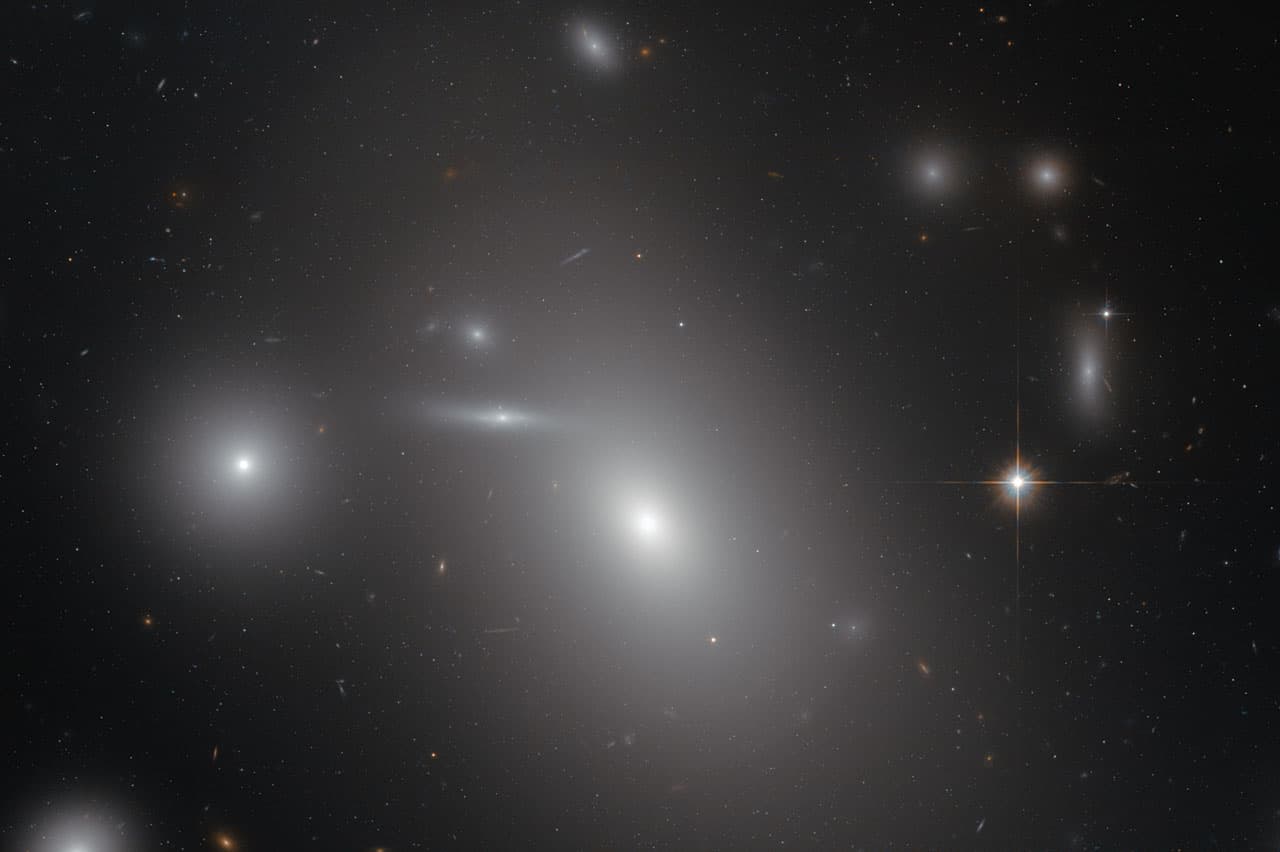NGC 4889 may be the brightest galaxy in this image, but it has a heart of darkness.
This image from the NASA/ESA Hubble Space Telescope shows the elliptical galaxy that is home to one of the most massive black holes ever discovered. Located about 300 million light-years away in the Coma Cluster, this record-breaking supermassive black hole weighs in at twenty-one billion times the mass of the Sun.
The event horizon of the black hole-- the surface at which even light cannot escape its gravitational grasp--has a diameter of approximately 130 billion kilometers. For comparison, the Earth is a mere 150 million km from the Sun. So if it were at the center of our solar system, this black hole would easily swallow our little planet (and most of the rest of the solar system).
Compare that to the supermassive black hole close to our own Milky Way Galaxy, which is believed to be a mere four million times that of the Sun.
A Record-Breaking Black Hole
It is impossible to directly observe a black hole, as light cannot escape its gravitational pull. However, instruments on the Keck II Observatory and Gemini North Telescope allowed the black hole's mass to be indirectly determined. Astronomers measured the velocity of the stars moving around NGC 4889’s centre. These velocities — which depend on the mass of the object they orbit — revealed the immense mass of the supermassive black hole.
NGC 4889's black hole has calmed down since its youth, when it would have been considered a quasar (a black hole that is consuming matter and, as a result, is flinging an enormous amount of matter out into space). Back then, the accretion disc around the black hole would have emitted up to a thousand times the energy output of the Milky Way.
Accretion discs are formed as galactic material-- such as gas, dust, and other debris-- slowly falls into a black hole. When it was active, NGC 4889’s supermassive black hole was fueled by the process of hot accretion. This super-heated material also expelled gigantic and very energetic jets.
Planning The Next Attack
That life is in its past, though. Now, the black hole seems to be taking a rest after devouring pieces of the surrounding galaxy. In fact, the environment within the galaxy is now so peaceful that stars are forming from its remaining gas and orbiting undisturbed around the black hole.
The black hole, though temporarily satiated, could come alive again someday. Although dormant, its existence allows astronomers to further their knowledge of how and where quasars, these still mysterious and elusive objects, formed in the early days of the Universe.
Share This Article
